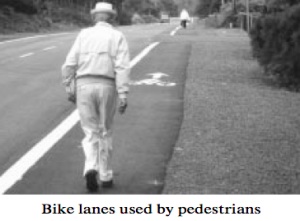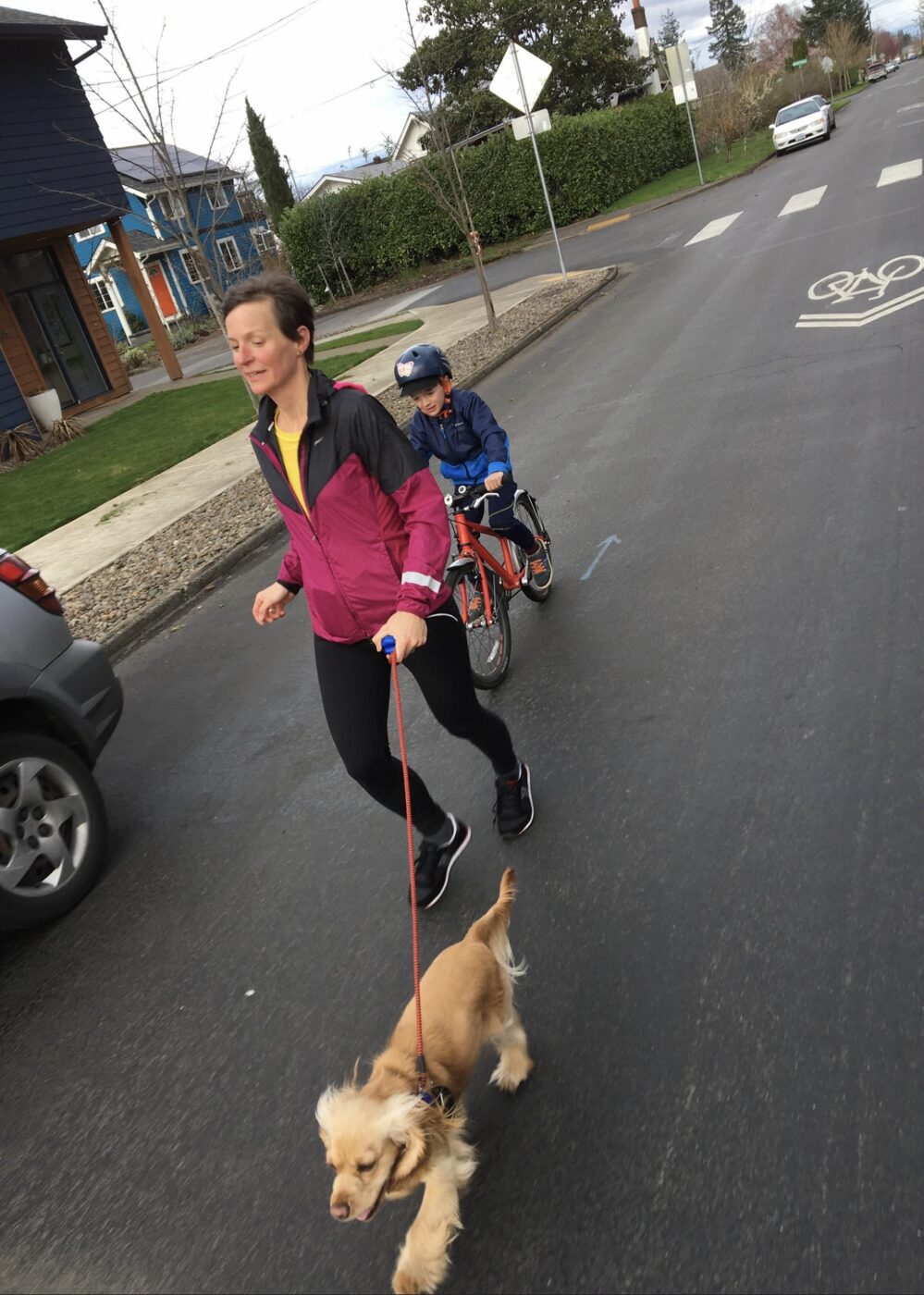This installment in our ongoing Ask BikePortland series tackles a question I’m sure many of you have had. It comes from reader Ian D.
“I was yelled at on Tuesday by a bicyclist who claimed I was doing something illegal by jogging on the street. Was he right?”
I’ve had this experience too, and I have to admit I was mildly frustrated at the person running. I think the feeling stems from the fact that when I’m riding my bike there’s a constant stream of compromises to the space I’m trying to occupy. If there’s no bike lane, not all people in cars are nice about sharing the space. If I’m on the sidewalk (which is legal except for a swath of downtown), than I must defer to people on foot. Even when I’m on a bike lane, there are often delivery trucks and hotel guests who push the limits of the legal exception that allows them to be there.
So, what is the deal with people who use roadway shoulders and bike lanes as jogging tracks?
“The general rule is that when pedestrians proceed along an Oregon highway [which in legal terms means any road], they must walk along either a usable ‘sidewalk’ or, if on a ‘shoulder’, as far as practicable from the roadway edge, facing oncoming (as opposed to overtaking) traffic.”
— Ray Thomas, lawyer
It just so happens that our friend (and faithful supporter) Ray Thomas, a lawyer at Portland firm Swanson, Thomas & Coon, has written extensively on the topic.
In legal terms, someone jogging is the same as a “pedestrian.” That being the case, Thomas (citing ORS 814.070) says that while walkers and joggers rule on the sidewalk, that all changes once they enter the shoulder of a roadway:
“… a pedestrian walking on the shoulder loses the right of way over vehicles that he or she enjoyed on the sidewalk. And if the pedestrian is not walking in an authorized spot and gets hit, the driver [or the person bicycling] will be able to argue in court that the pedestrian violated the law.”
In situations where there isn’t a sidewalk or a shoulder, people on foot are legally required to be “as near as practicable to an outside edge of the roadway,” says the ORS.
If you are jogging on the actual roadway (which is legally defined as the place that is “designed or exclusively used for vehicular travel”), you must yield the right of way to vehicles — including bicycles.
This was the case in Ian’s situation. He was jogging on NE Alameda (approaching Fremont) where there is no bike lane and he was traveling on the right (with overtaking traffic, although he says he realizes now he should be on the left, against traffic).

To recap, Thomas says,
“the general rule is that when pedestrians proceed along an Oregon highway [which in legal terms means any road], they must walk along either a usable ‘sidewalk’ or, if on a ‘shoulder’, as far as practicable from the roadway edge, facing oncoming (as opposed to overtaking) traffic.”
It doesn’t apply to Ian’s case, but just out of curiousity, we also looked into people jogging and walking on bike lanes. The Oregon Vehicle Code doesn’t specifically mention walking in bike lanes; but since bike lanes are considered part of the roadway, Thomas says the same rules apply to people walking in them as in standard vehicle lanes.
Of course there is Oregon law (which is far from complete when it comes to respecting bicycling and walking as modes of travel), and then there’s common — and even recommended — practice. Thomas points out that while Oregon law technically prohibits walking in bike lanes, the Oregon Bicycle and Pedestrian Plan not only says the practice is O.K., it includes a photo of an elderly gentleman walking in one (and with traffic no less!)
So, to answer your question Ian: Yes and no. Legally-speaking you shouldn’t have been running in the roadway in that location; but I don’t think it was right for the guy to yell at you about it.
— Have a burning bike question you’d like us to answer? Send it in. Read past questions (and answers provided by our esteemed community of commenters) at our Ask BikePortland page.


